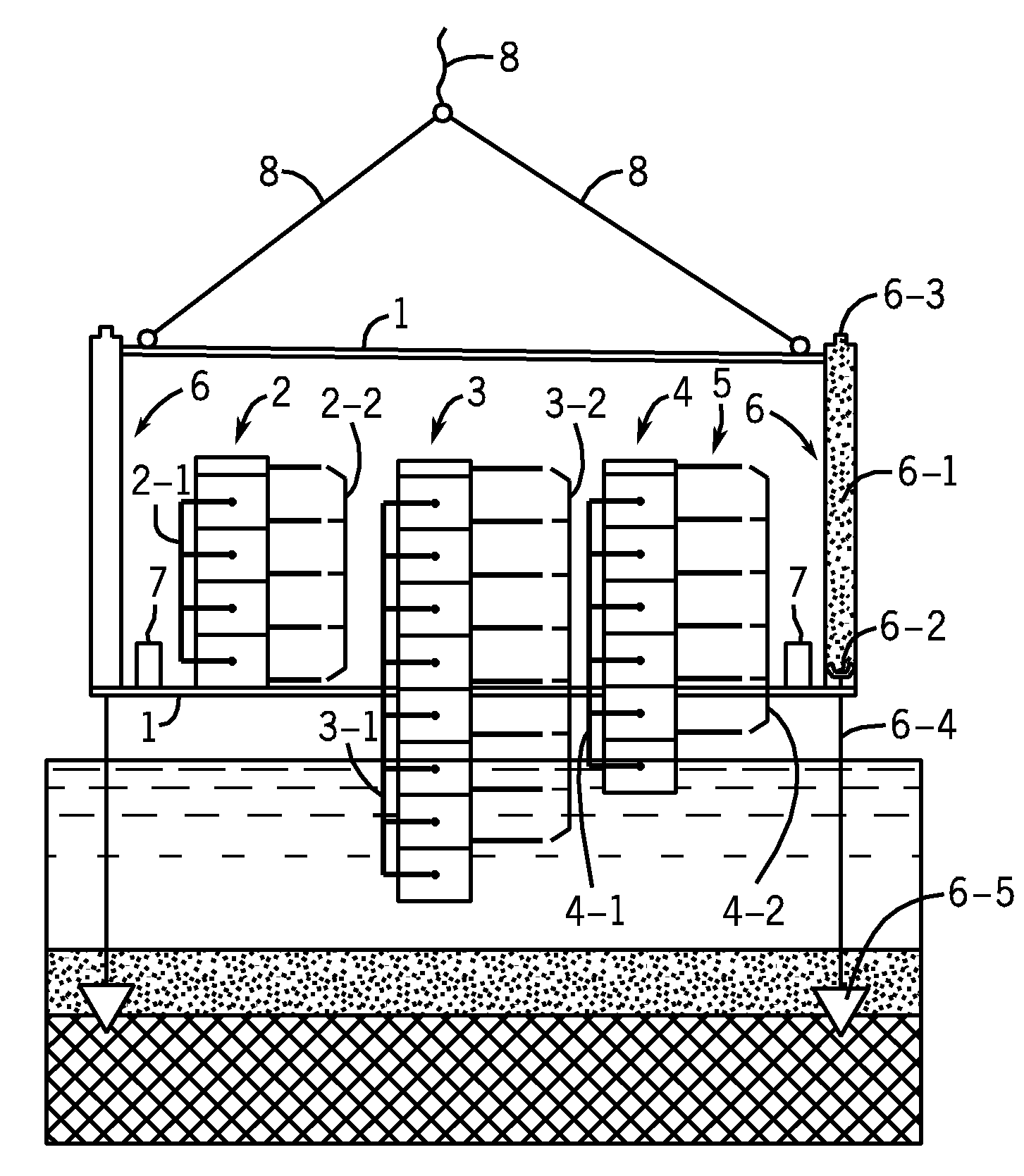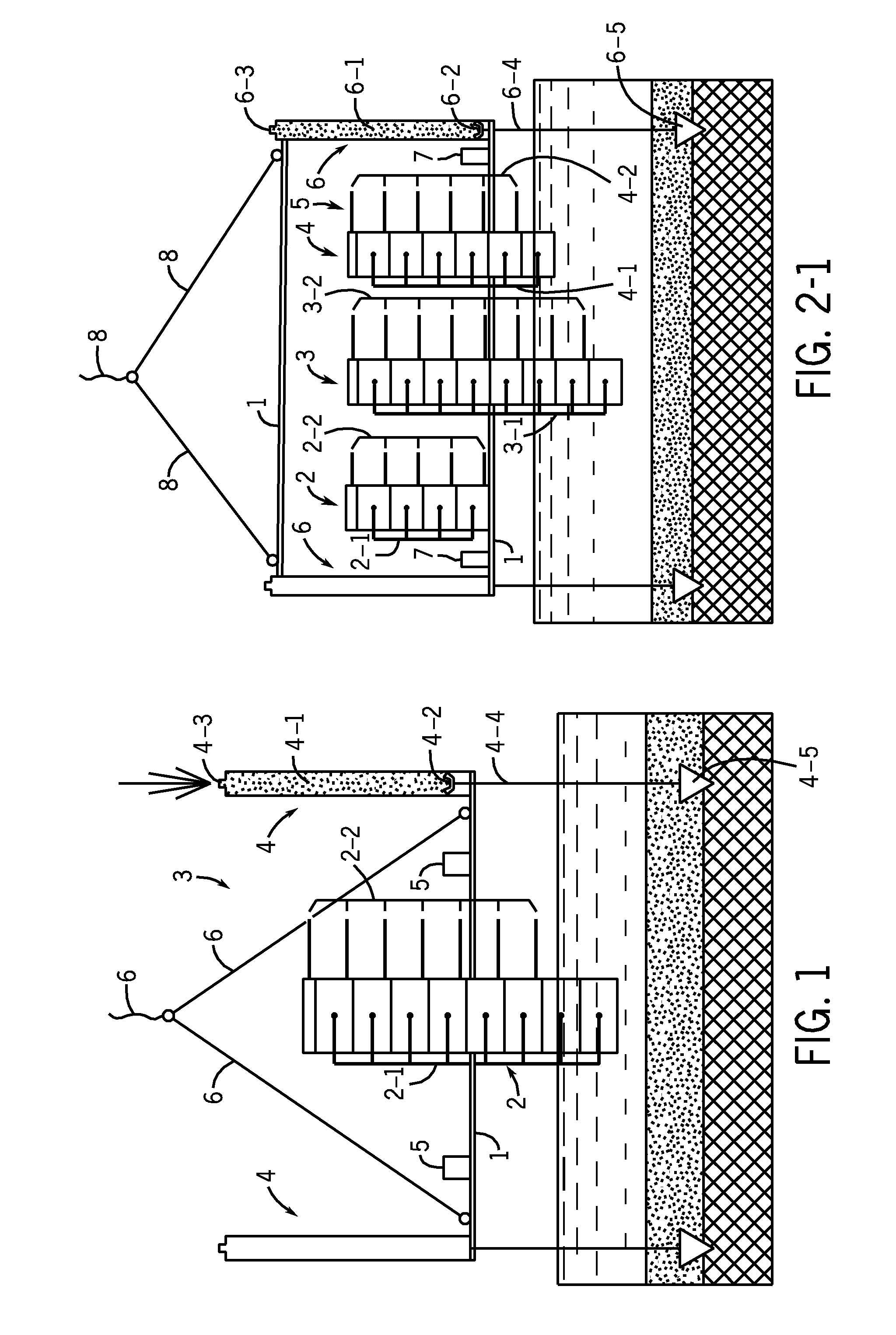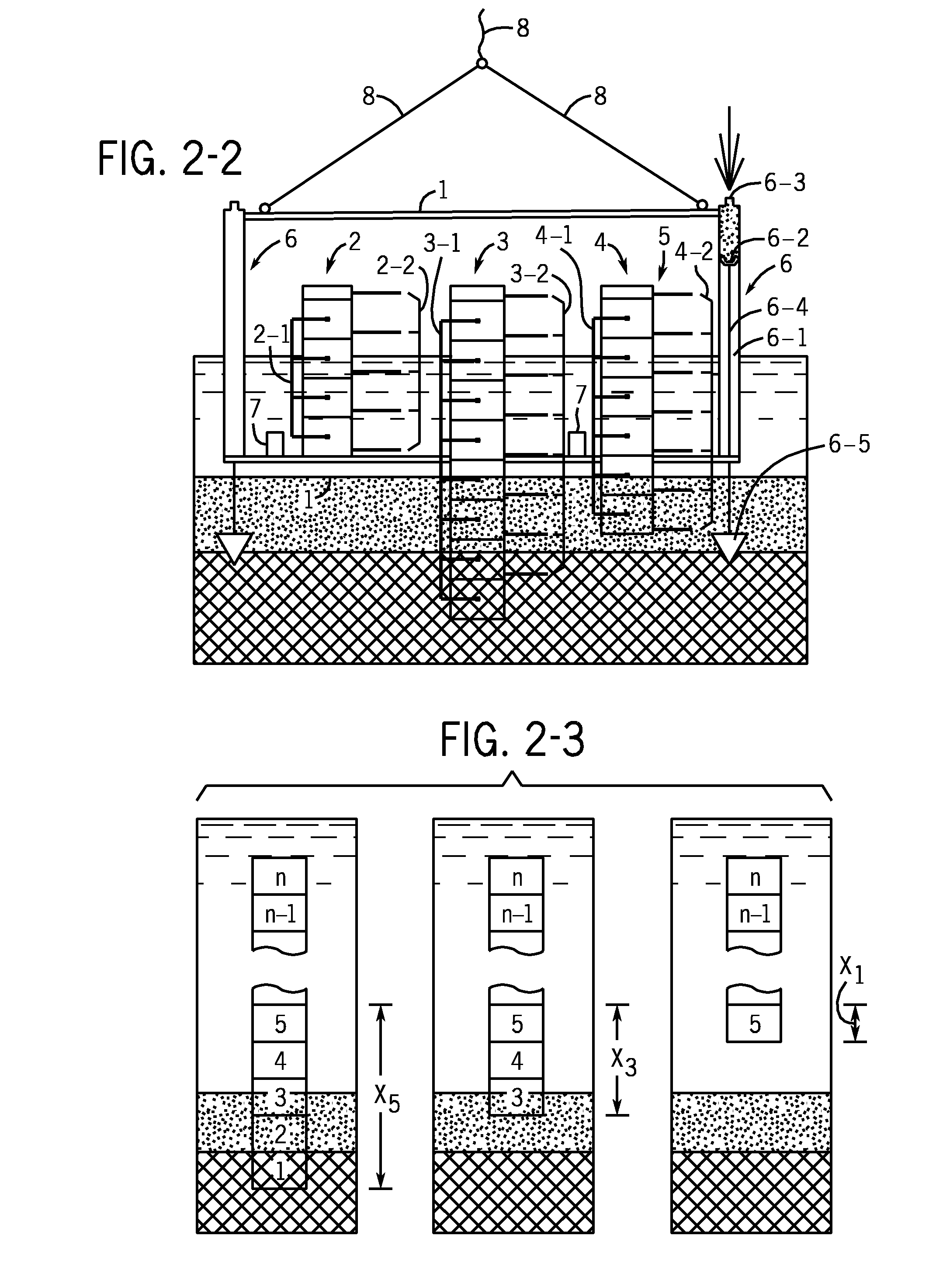Device for Taking Samples from the Bottom Boundary Layer of a Water Body
a technology for water bodies and devices, applied in the field of oceanographic instruments, can solve the problems of inability to retard the descent of the device, the footings on the lower end of the support rods of the shock absorber unit, and the inability of instruments in use to sample the boundary layer in its original state, so as to ensure the vertical stability of the device, reduce the weight of the device, and reduce the effect of pressure on the contact surfa
- Summary
- Abstract
- Description
- Claims
- Application Information
AI Technical Summary
Benefits of technology
Problems solved by technology
Method used
Image
Examples
Embodiment Construction
[0018]In FIG. 1-FIG. 3-3 the components comprised in the sampling device are marked with the following numbers and signs:
Name ofFIGS. 2-1 andFIGS. 1, 3-1, 3-2elementFIG. 12-2FIG. 2-3and 3-3Supporting 111frameSampling 22,3,42tubeSection2-12-1, 3-1, 4-12-1Horizontal 2-22-2, 3-2, 4-22-2valveControl unit353Shock 464absorber unitCylinder4-16-14-1Hydraulic 4-26-24-2plungerNozzle4-36-34-3Support rod4-46-44-4Footing4-56-5Support belt4-6Additional 57weightCable686Stabilizing 5balloonHigh-pressure 7gas balloonSamples 1, 2, 3, 4,from the 5, n-1, nbottomto the topThe routs of X1, X2sample and X3(5-th)movementWeight of the GdeviceBuoyancy of theH2stabilizing balloonBuoyancy of the H3supportbelt
[0019]FIG. 1 presents the known device for sampling in water basins.
[0020]FIG. 2-1 shows the presented sampling device, which differs from the sampler presented in FIG. 1 in that, several sampling tubes located at different heights are used.
[0021]FIG. 2-2 depicts the final moment of sampling with the devic...
PUM
 Login to View More
Login to View More Abstract
Description
Claims
Application Information
 Login to View More
Login to View More - R&D
- Intellectual Property
- Life Sciences
- Materials
- Tech Scout
- Unparalleled Data Quality
- Higher Quality Content
- 60% Fewer Hallucinations
Browse by: Latest US Patents, China's latest patents, Technical Efficacy Thesaurus, Application Domain, Technology Topic, Popular Technical Reports.
© 2025 PatSnap. All rights reserved.Legal|Privacy policy|Modern Slavery Act Transparency Statement|Sitemap|About US| Contact US: help@patsnap.com



